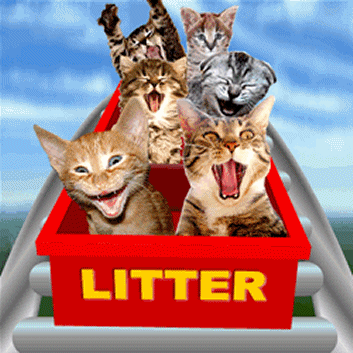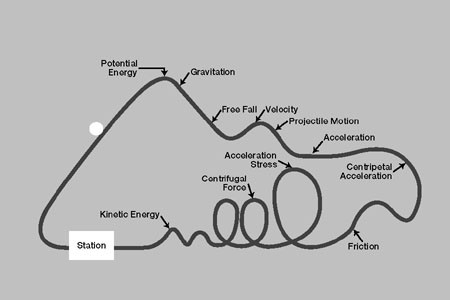
| Home | Dates to Remember | Fun, Fun!!! | Today's Assignments | March's B'Days | Contact me | Required Readings | Labs | Projects | Internet Use | ||
|
Mrs. Ledesma's Science Class |
||
|
Roller Coaster Project |
||
|
Roller Coaster Project Objectives: TO DESIGN Materials CHOICE OF MATERIALS IS AT THE DISCRETION
OF THE STUDENTS. NO
PREFABRICATED PARTS INSTRUCTIONS EACH STUDENT WILL RESEARCH COASTER DESIGNS
FROM LITERATURE OR ACTUAL STRUCTURES NOTING BRACING POINTS EACH
GROUP OF STUDENTS WILL THEN DESIGN STUDENTS
WILL KEEP JOURNALS REGARDING RESEARCH, RESULTS, CHANGES, Students will also answer specific questions before
they design their roller coaster. Please see journal section at the end for questions and links that will help you research
the answers. EACH
JOURNAL WILL INCLUDE A PRELIMINARY AS SPECIFICATIONS EACH COASTER THE COASTER MUST BE THERE IS NO WEIGHT LIMIT FOR THE
COASTER BUT IT MUST BE PORTABLE. THE TRACK MUST INCLUDE A ANY DESIGN CAN BE USED AS LONG AS
THE ROADBED IS FLAT PROCEDURE EACH COASTER MUST FIRST ALLOW A MATCHBOX
A FRESH THE OBJECT IS TO COMPLETE THE TRACK
WITHOUT FLIPPING UPSIDE DOWN Grading EACH COASTER WILL BE RANKED USING
A CHECKLIST FOR COMPLIANCE WITH THE LISTED CRITERIA. Criteria checklist
I use to grade the coasters Construction: Height under 1 meter....10 pts Length under 1 meter...10 pts Freestanding on a base...10 pts Contains a loop....20 pts Contains a second elevation....20 pts Evaluation: Ball traverses entire track safely....20 pts Car traverses entire track safely....30 pts Car slows down safely at end of track….10pts Journal: The following questions must be answered before you design
your rollercoaster: 1. Briefly describe the following
periods in the history of Roller Coasters: Entries must be made several times a week, designs (preliminary
and final) must be clear and to scale. Formulas and mathematical procedures must be accurate and self explanatory. Research
must include websites used, books, or any other recourses used. All pictures, questions, and journal entries must be in your
binder. Plagiarism will be severely dealt with ....100 pts total Creativity and Presentation …..20pts Total Point value of the prject is 250 pts. Due Dates Due dates MUST be kept exactly, unless prior arrangements have been made
with me. Due Dates are as follow: Journal with questions answered, and design and materials ideas.
No design is necessary for this date, but you should have checked out possibilities...... Nov. 18th. Journal with preliminary design (to scale) and entries Dec 2nd. Journal with work done, entries and any design changes. This is
the last time that any changes can be submitted. After this time, any change will require approval (by me) and will cost you
point deductions. Jan 20th Roller Coaster due in my room with completed journal and all
math calculations, pictures, etc. (before homeroom) Jan 28th
|
||
|
|
||
|
|
||


